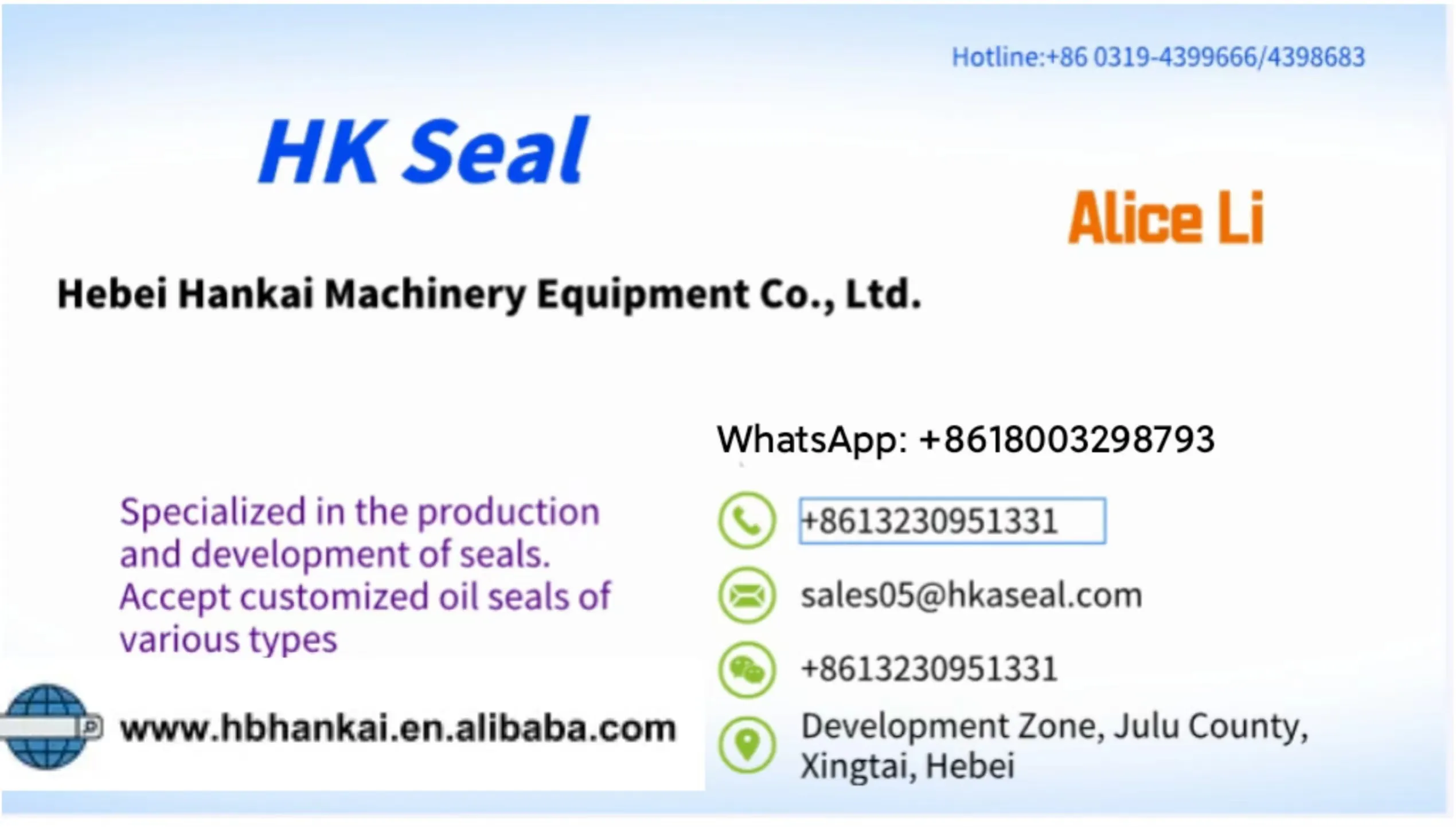Nov . 16, 2024 07:47 Back to list
Understanding Cylinder Wiper Seals and Their Importance in Hydraulic Systems
Understanding Cylinder Wiper Seals Function and Importance
Cylinder wiper seals, often referred to simply as wiper seals, are essential components in hydraulic and pneumatic systems. Their primary function is to prevent contaminants from entering the cylinder, ensuring the efficient operation and longevity of machinery. These seals play a critical role in various applications, from construction machinery to automotive systems, making them a fundamental topic in engineering and maintenance.
At their core, wiper seals are designed to wipe away dirt, dust, and other debris that could potentially interfere with the smooth operation of a cylinder. They are typically mounted at the outer edge of a hydraulic or pneumatic cylinder, and as the piston rod moves in and out, the wiper seal removes any external contaminants. This action prevents these unwanted particles from entering the cylinder, which could lead to wear and tear or even catastrophic failures.
One of the significant advantages of using cylinder wiper seals is their ability to enhance the performance and reliability of hydraulic systems. Hydraulic cylinders are often subjected to high pressures and adverse environmental conditions. Without effective sealing, contaminants could lead to increased friction and decreased efficiency, resulting in hydraulic fluid leaks and reduced operational capacities. By incorporating high-quality wiper seals, engineers can significantly extend the service life of cylinders, thereby reducing maintenance costs and downtime.
cylinder wiper seal

The materials used in the construction of wiper seals are pivotal to their performance. Most wiper seals are made from rubber or elastomeric materials, offering excellent flexibility and durability. Various formulations are available, allowing for adaptability to specific environments, such as high temperatures or exposure to chemicals. The design of the wiper seal itself also varies; some feature a lip design that is more effective at scraping away debris, while others may include additional features like dust covers for extra protection.
When selecting cylinder wiper seals, factors such as the size of the cylinder, the operating environment, and the type of fluids involved must be considered. It’s essential to choose the right type of seal to ensure compatibility and optimal performance. Regular inspection of wiper seals is also critical. Over time, seals may wear out or become damaged due to continuous exposure to external elements. Signs of failure, such as fluid leaks or inconsistent cylinder movement, should be addressed immediately to avoid further complications.
In conclusion, cylinder wiper seals are a small yet vital component in ensuring the proper functioning of hydraulic and pneumatic systems. They serve to protect against contaminants, thus maintaining the efficiency and longevity of machinery. Understanding their role, material properties, and maintenance needs can help operators and engineers make informed decisions that enhance performance and reduce operational costs. As technology advances, the design and manufacturing of wiper seals continue to evolve, promising even greater performance in the future.
-
TCN Oil Seal Metal Ring Reinforcement for Heavy Machinery
NewsJul.25,2025
-
Rotary Lip Seal Spring-Loaded Design for High-Speed Applications
NewsJul.25,2025
-
Hydraulic Cylinder Seals Polyurethane Material for High-Impact Jobs
NewsJul.25,2025
-
High Pressure Oil Seal Polyurethane Coating Wear Resistance
NewsJul.25,2025
-
Dust Proof Seal Double Lip Design for Construction Equipment
NewsJul.25,2025
-
Hub Seal Polyurethane Wear Resistance in Agricultural Vehicles
NewsJul.25,2025
-
The Trans-formative Journey of Wheel Hub Oil Seals
NewsJun.06,2025
Products categories
















